This Bluebell in the family Campanulaceae, is the Australian Bluebell belongs to the genus Wahlenbergia, that includes both annuals and perennials.
The bluebell genus have a fleshy tap root and sometimes underground stems, whilst the stems above ground are erect, terete, and sometimes branched. The bluebells may be almost hairless to hairy. The leaves are at the base and on the lower stems of the plant. The leaf margins may be toothed, although they are mostly linear, flat or wavy.
The flowers are usually pale to blue, bell-shaped with five lobes and are on long leafless stalks. The flowers open around mid-morning in full sunshine and close late in the afternoon. The seed capsule develops inside the calyx, which does not drop after flowering.
The habitat of Wahlenbergia capillaris is widespread, found in all mainland states and territories of Australia. It is especially common in disturbed sites and along roadsides.
They usually grows during the cooler months, although germination and growth can occur after favourable rains during the warmer seasons. When they appear in flower, especially on mass or among other mass wildflowers events, they can be very conspicuous.

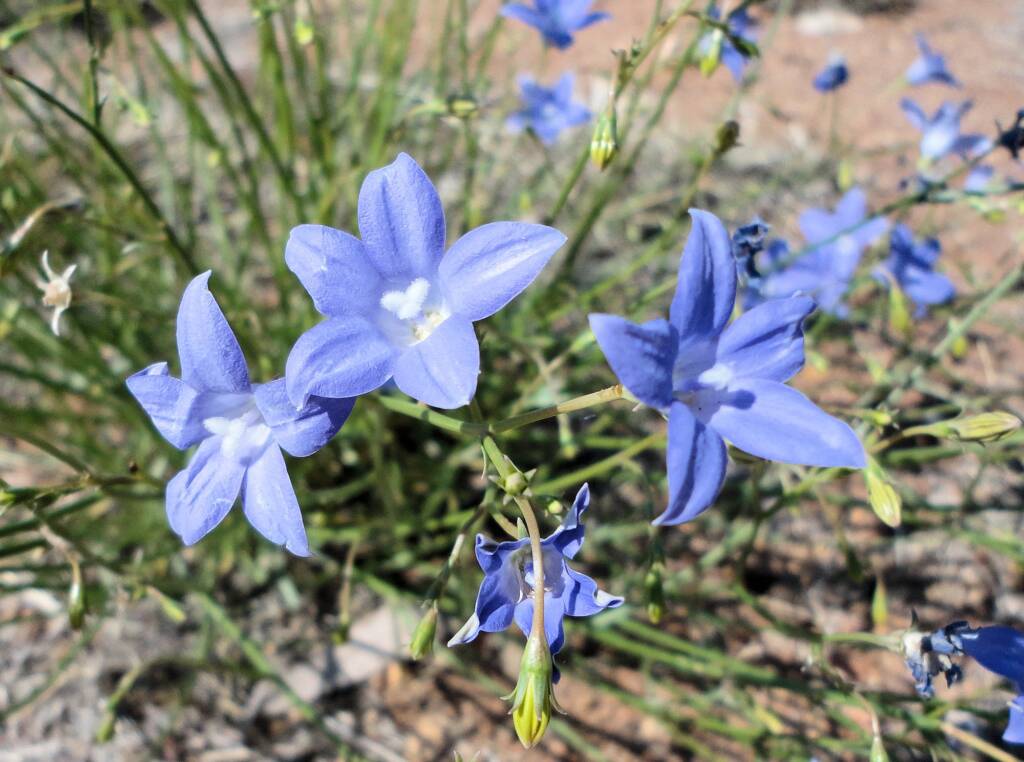
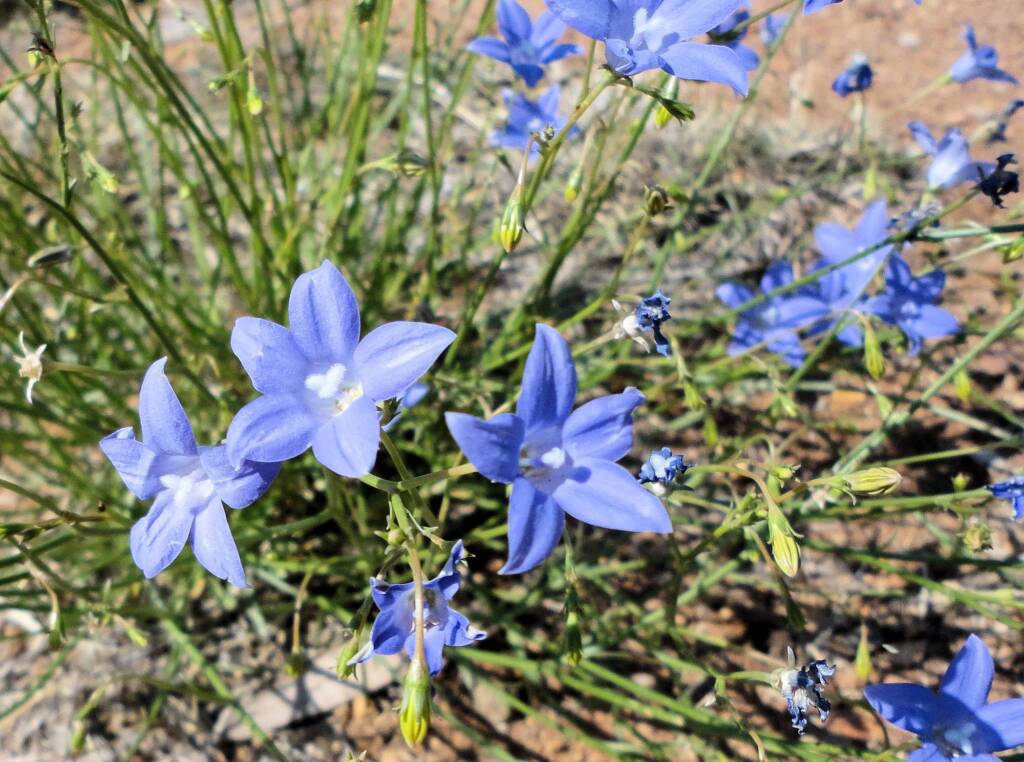
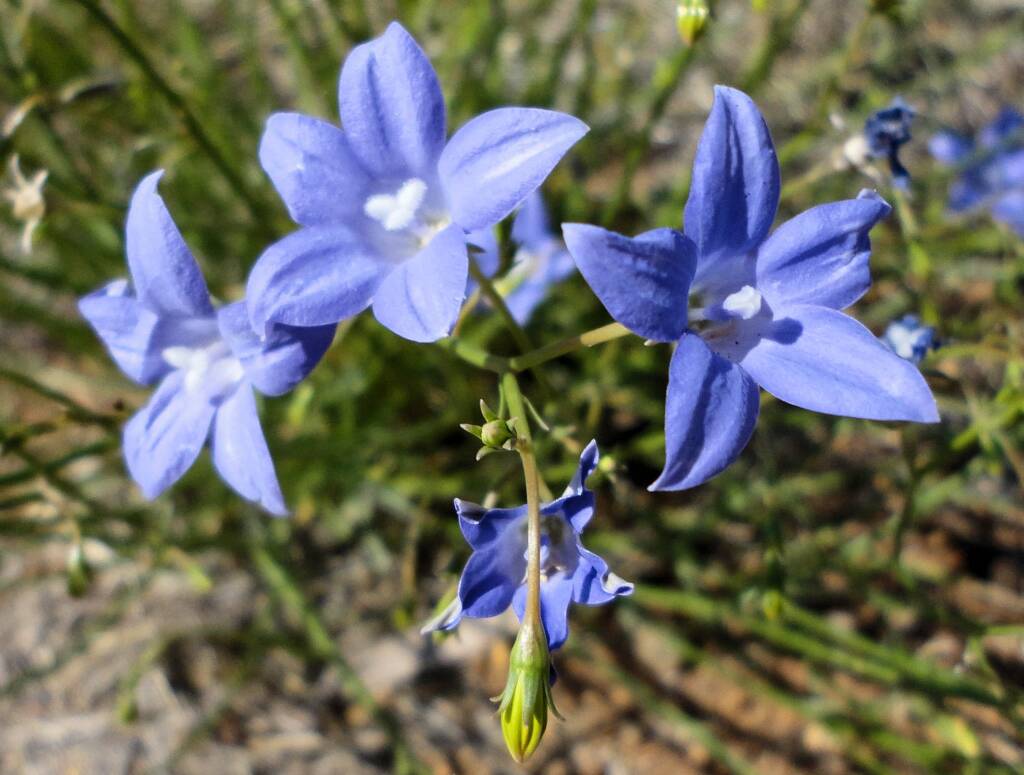
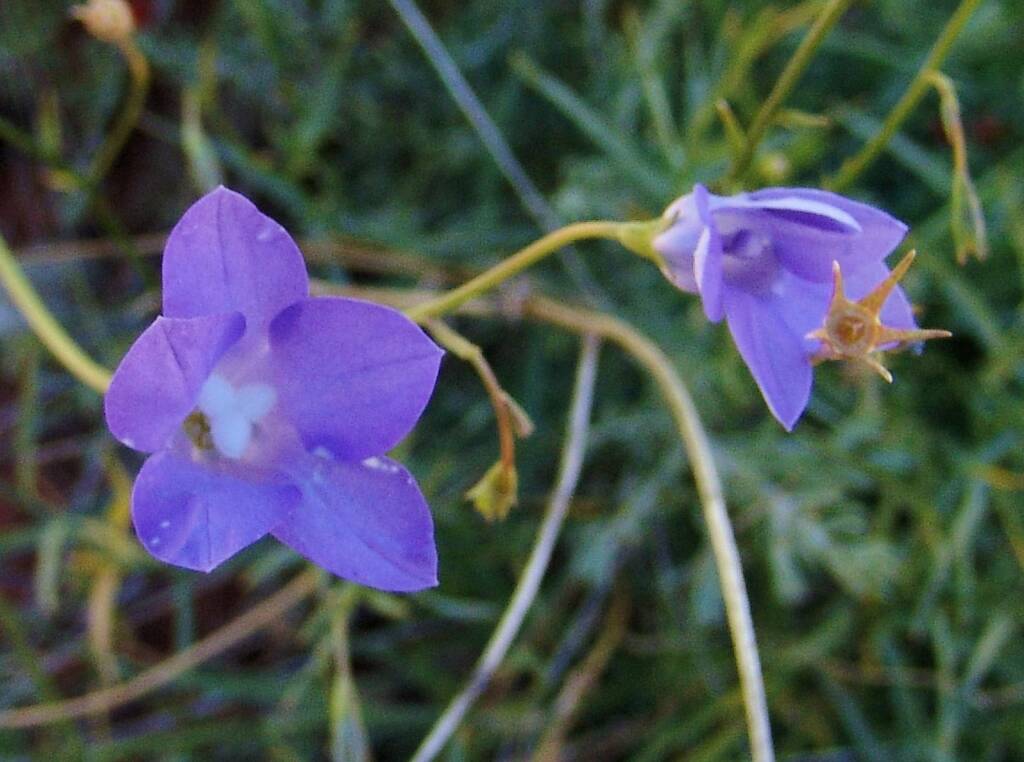
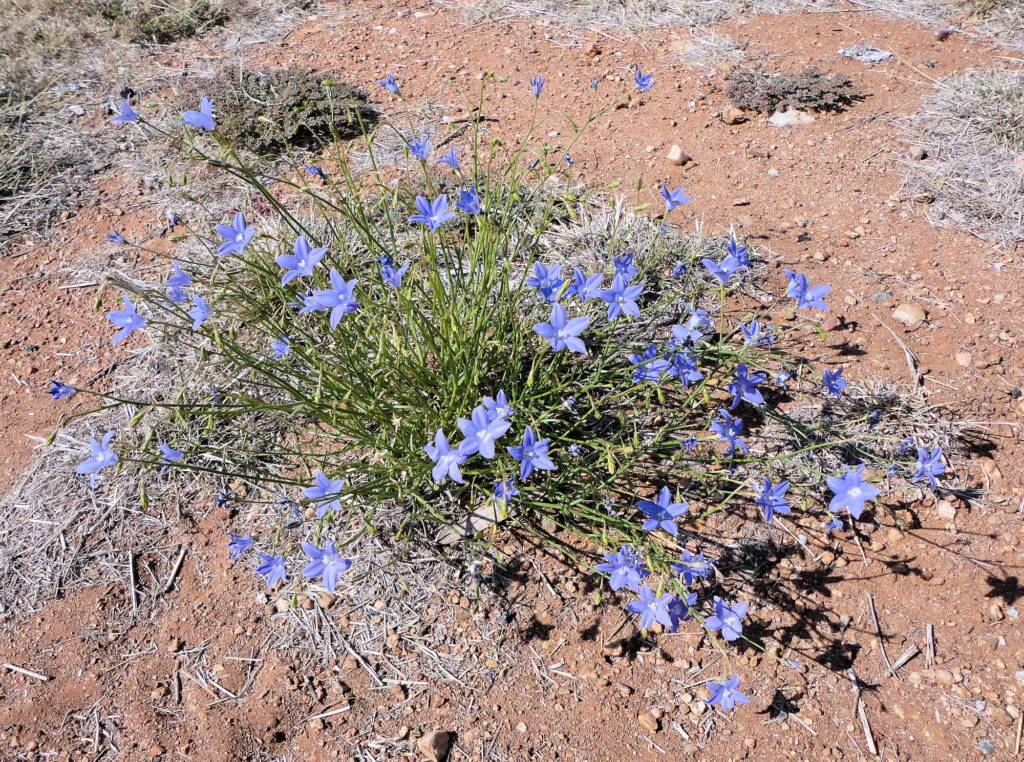
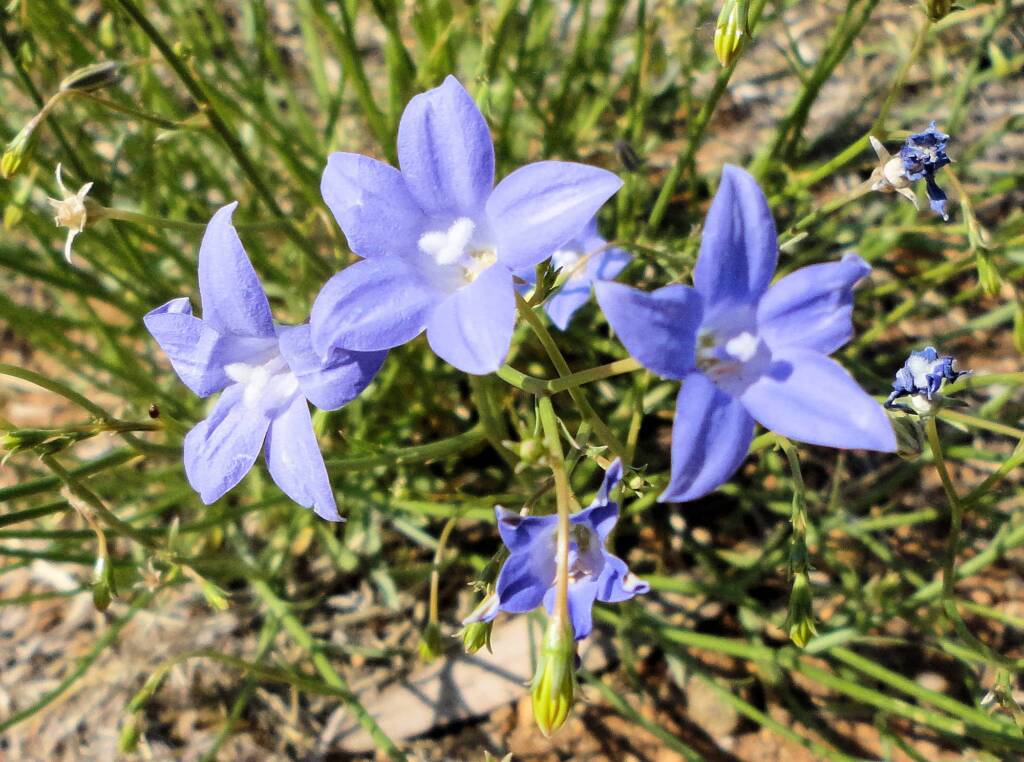

This article is about the Australian Bluebell (Wahlenbergia gracilis), sometimes listed under Wahlenbergia communis and more recently Wahlenbergia capillaris. In addition to Wahlenbergia gracilis, there are several species found in Central Australia-Northern Territory. The bluebells are distinguished by the leaves (lower leaves alternate or opposite), the size and shape of the flower petals, and the shape of the seed capsule.
The W. gracilis is a perennial that grows in tufts, which are connected by underground stems. The plant is usually hairless, and grows 15-60 cm tall.
The following images are of W. gracilis (Australian bluebell), a perennial which grows in tufts. Hairless or sparsely haired, the leaves are alternate. The blue flower appears on erect stems, with a number of flowers on branched stems, that can be anywhere between 10 to 50 cm tall. The style has 3 ends. These photos were taken during September, along the Tanami Road, north of Alice Springs.
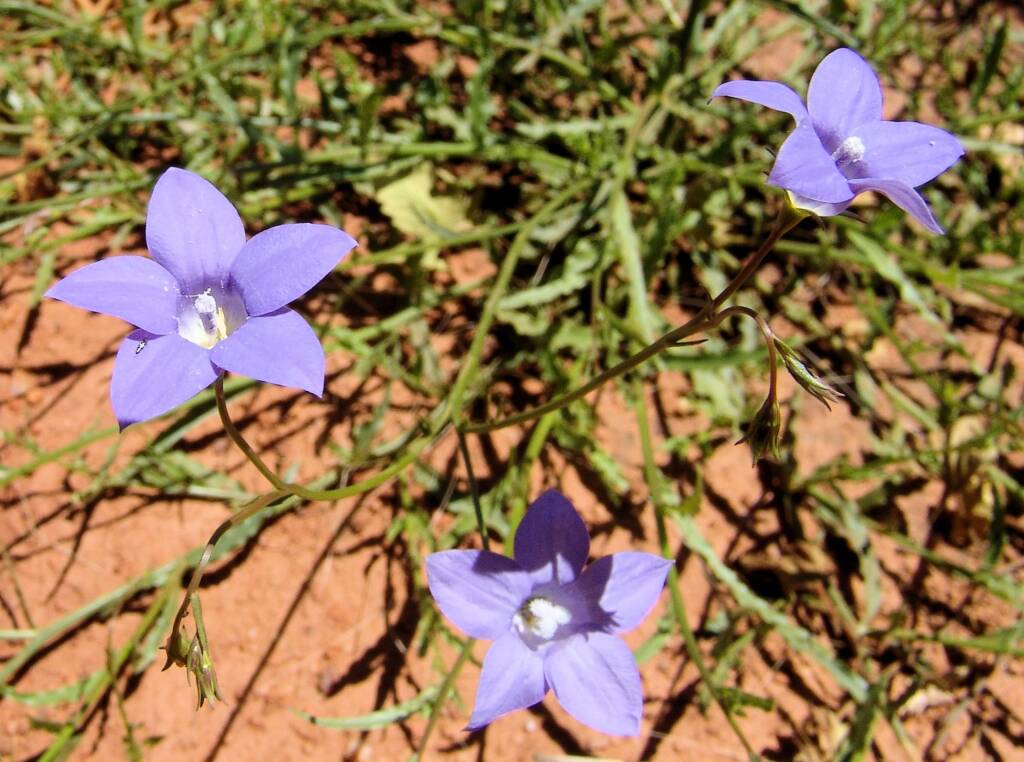

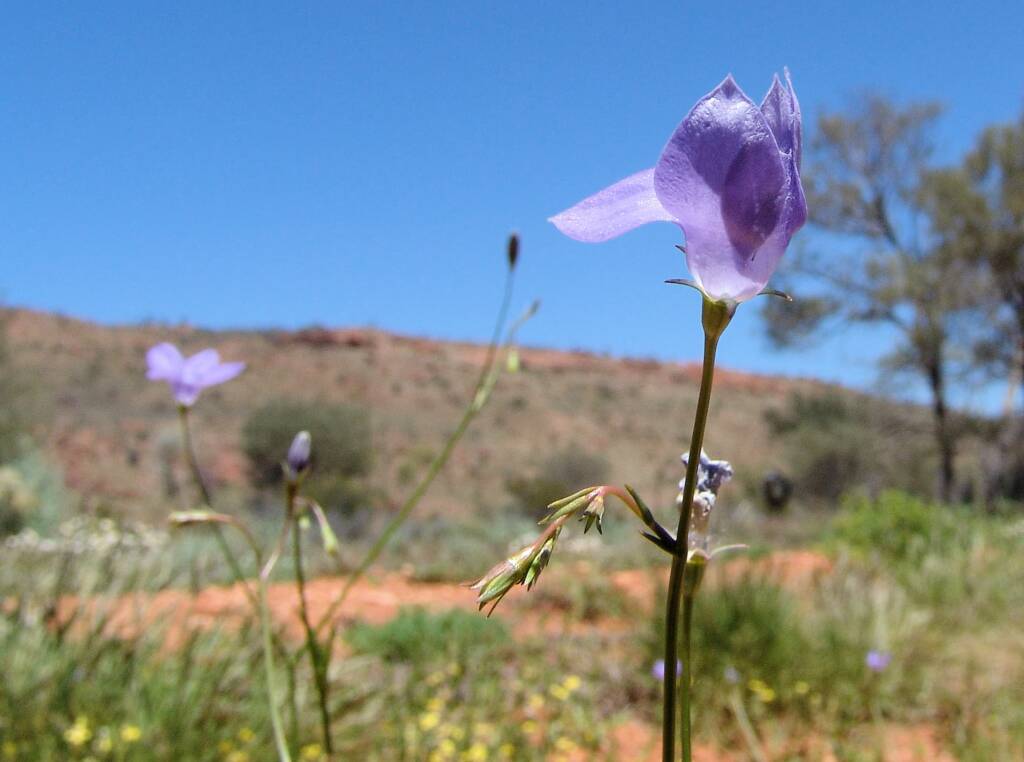
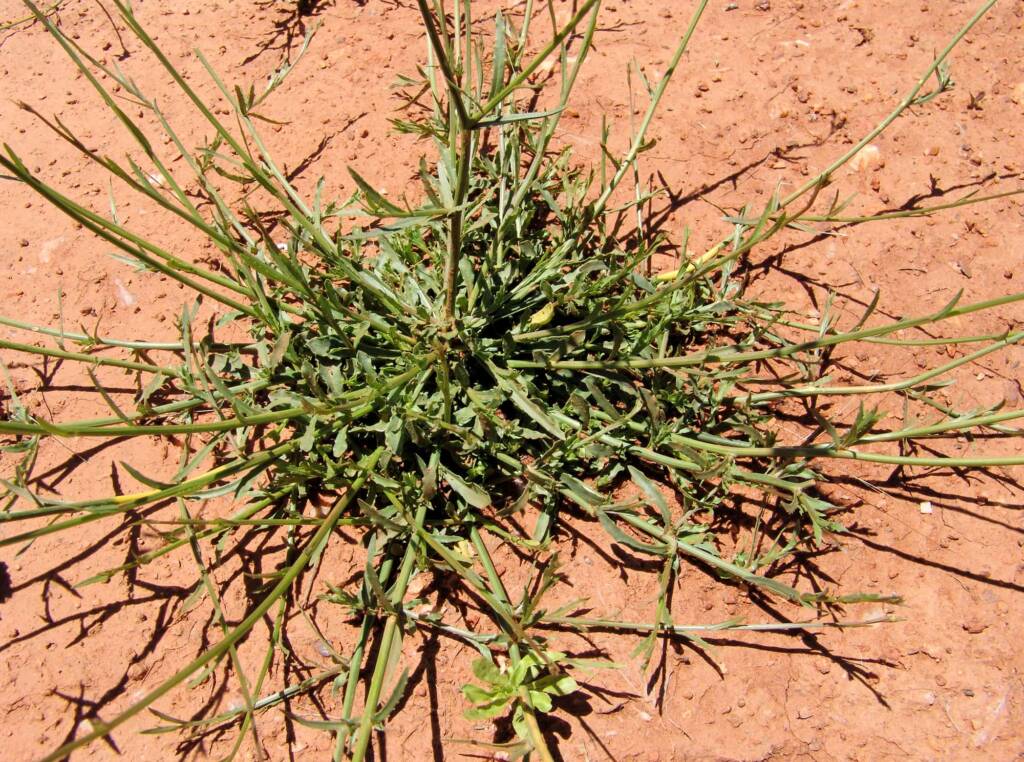

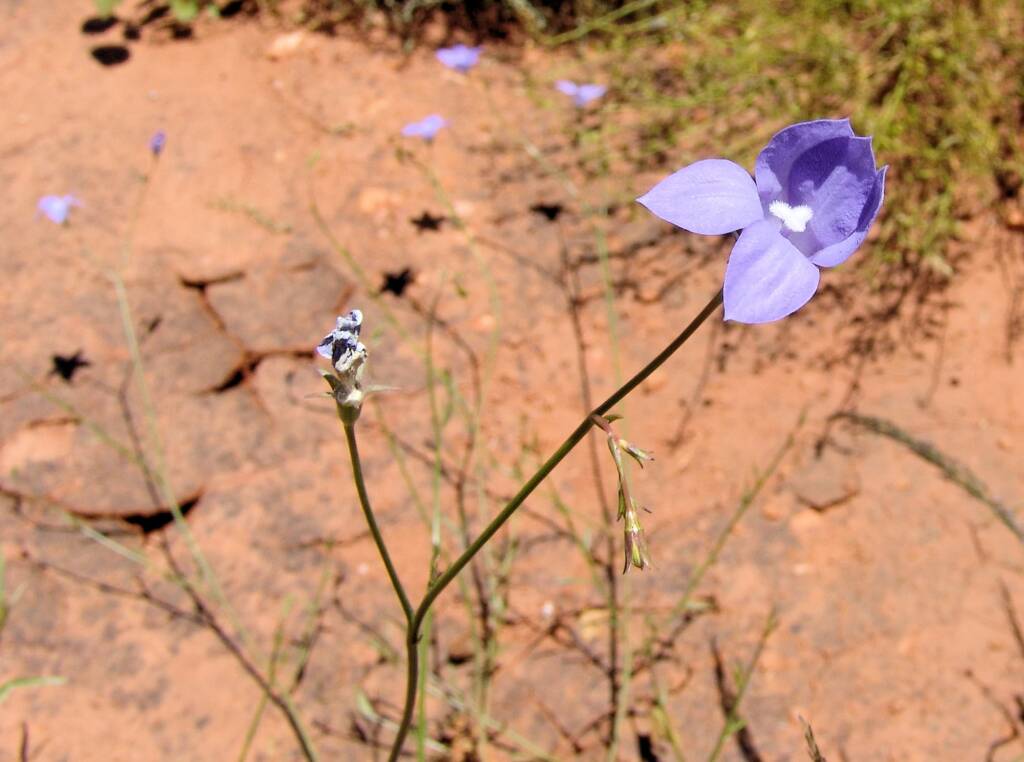
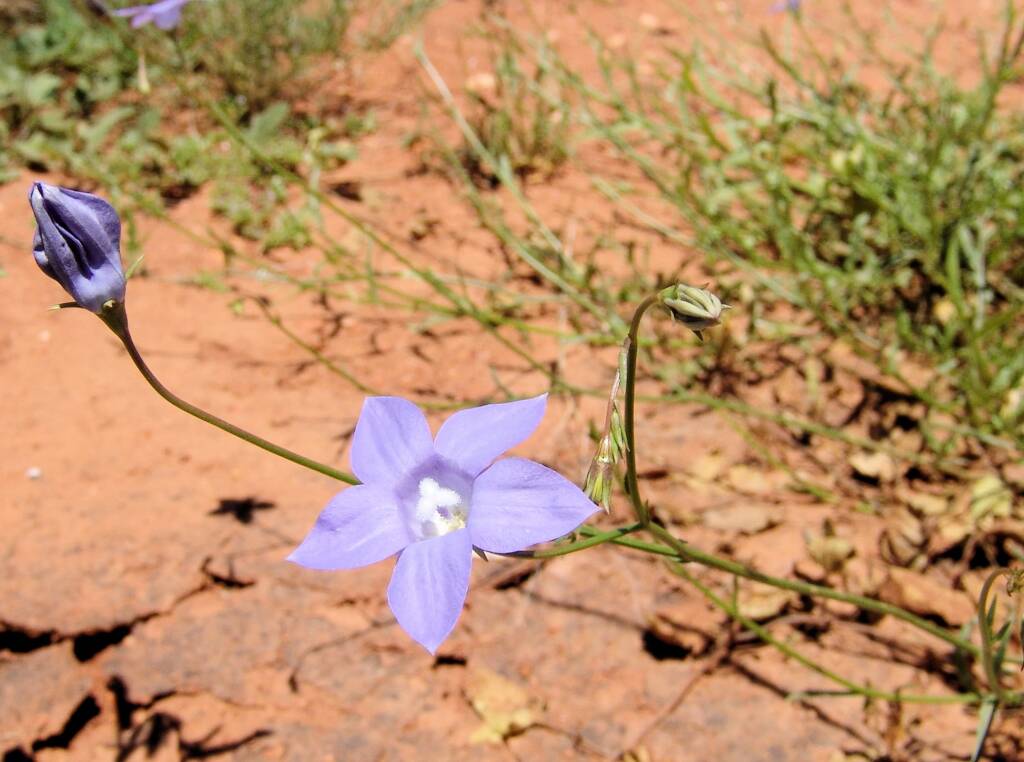
The following is from the Olive Pink Collection. Watercolour on paper sketched by Olive Pink, Northern Territory, 1930. Identified by Olive Pink as Wahlenbergia gracilis (Dimensions 19x25cm) (File No. p6-11-12).
Miss Pink’s Wildflowers, University Librarian, University of Tasmania.
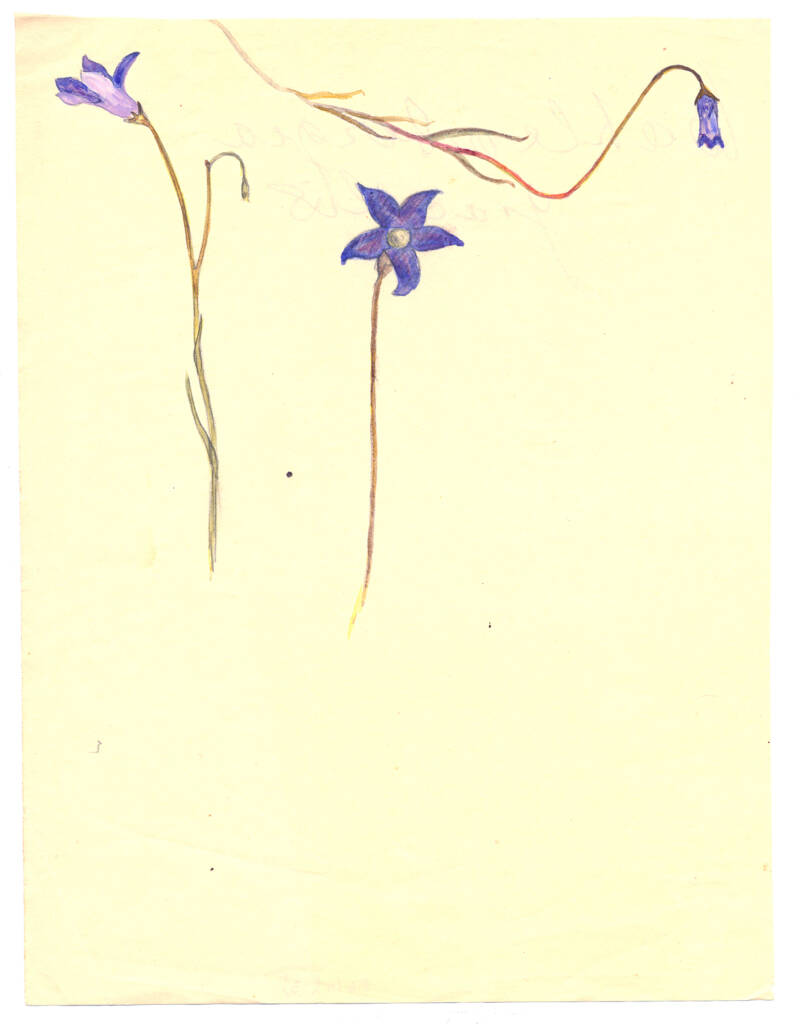
At time of writing, this plant classification has been changed from Wahlenbergia gracilis to Wahlenbergia communis on the University of Tasmania website resource for the Estate of Olive Pink.
Further re-classification has the following (researched on the Wikipedia website):
The tufted bluebell was first formally described in 1839 by George Loddiges who gave it the name Campanula capillaris and published the description in The Botanical Cabinet. In 1839, George Don changed the name to Wahlenbergia capillaris.
Roger Carolin rejected the name Campanula capillaris because Loddiges’ description was inadequate, and in 1965 Carolin gave the species the name Wahlenbergia communis. In 2016, Ian Turner resurrected Loddiges’ name and the change has been accepted by the World Checklist of Selected Plant Families and the Australian Plant Census. The specific epithet (capillaris) is a Latin word meaning “of hair”.
Wahlenbergia capillaris, https://en.wikipedia.org/wiki/Wahlenbergia_capillaris
- Scientific classification
- Kingdom: Plantae
- Clade: Tracheophytes
- Clade: Angiosperms
- Clade: Eudicots
- Clade: Asterids
- Order: Asterales
- Family: Campanulaceae
- Genus: Wahlenbergia
- Species: Wahlenbergia gracilis
Footnote & References
- Wahlenbergia capillaris, https://en.wikipedia.org/wiki/Wahlenbergia_gracilis (last visited Dec. 26, 2020)
- Wahlenbergia gracilis, Greening Australia, https://www.greeningaustralia.org.au/wp-content/uploads/2017/11/FACT-SHEET_Wahlenbergia_gracilis.pdf
FloraFlora in Australia Flora Index Acacia Anigozanthos (Kangaroo Paws) Annual Yellowtop Apium prostratum subsp. prostratum var filiforme Apple Bush (Pterocaulon sphacelatum) Australian Bluebell Australian Gossypium Banksia Batswing Coral Tree Billy Buttons Birdsville Indigo Blue Pincushion Bush Banana Callistemon Callitris drummondii (Drummond’s Cypress Pine) Calothamnus quadrifidus Cape Honeysuckle Cassia fistula (Golden Shower) Cattle Bush Common Heath Crotalaria Darwinia wittwerorum (Wittwer’s Mountain Bell) Daviesia oppositifolia (Rattle-pea) Desert Oaks Drumsticks Eremophila Eucalyptus Ficus Flannel Cudweed (Actinobole uliginosum) Georges Indigo Goatshead Burr (Sclerolaena bicornis) Golden Everlasting Goodenia Gossypium Grass and Grasses Grass Trees Grevillea Grey Germander Hakea Kapok Bush (Aerva javanica) Lambertia sp Leptospermum MacDonnell Ranges Cycad Maireana scleroptera Mexican Poppy Minnie Daisy Mistletoe Family Nardoo Native Apricot Nicotiana megalosiphon subspecies sessilifolia Nuytsia floribunda Orange Spade Flower Orchidaceae Parakeelyas (Calandrinia) Pebble Bush (Stylobasium spathulatum) Perennial Yellow Top Pink Everlasting Pink Rock Wort Poached Egg Daisy Portulaca Proteaceae Ptilotus Quandong Resurrection Fern Rosy Dock Ruby Saltbush Santalum Solanum Spike Centaury Spinifex Storkbill (Erodum cygnorum) Striped Mint Bush Sturt’s Desert Pea Sturt’s Desert Rose Tall Saltbush Tangled Leschenaultia Tar Vine Tribulus eichlerianus Upside-down Plant Urodon dasyphylla Variable Daisy Waratah (Telopea) Wertabona Daisy White Cedar (Melia azedarach) White Indigo White Paper Daisy Wild Passionfruit Wild Stock Woolly-Headed Burr Daisy Woolly Bush Yellow-keeled Swainsona
Flora & FaunaFauna Flora Fauna Flora Funga Glossary Funga Related Topics Scientific Classification Backyard Wildlife Floral Emblems of Australia Wildflowers
